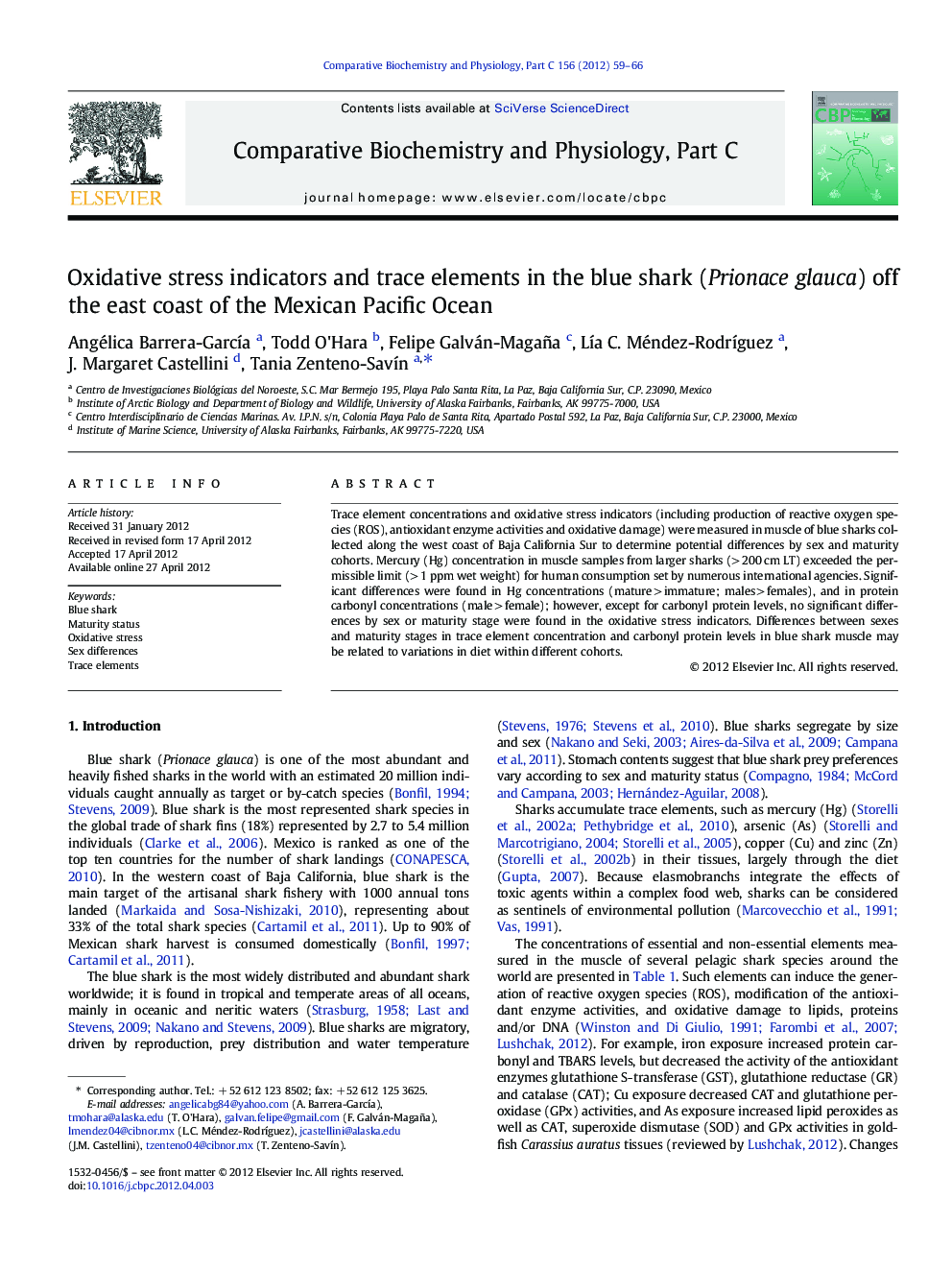| Article ID | Journal | Published Year | Pages | File Type |
|---|---|---|---|---|
| 1977427 | Comparative Biochemistry and Physiology Part C: Toxicology & Pharmacology | 2012 | 8 Pages |
Trace element concentrations and oxidative stress indicators (including production of reactive oxygen species (ROS), antioxidant enzyme activities and oxidative damage) were measured in muscle of blue sharks collected along the west coast of Baja California Sur to determine potential differences by sex and maturity cohorts. Mercury (Hg) concentration in muscle samples from larger sharks (> 200 cm LT) exceeded the permissible limit (> 1 ppm wet weight) for human consumption set by numerous international agencies. Significant differences were found in Hg concentrations (mature > immature; males > females), and in protein carbonyl concentrations (male > female); however, except for carbonyl protein levels, no significant differences by sex or maturity stage were found in the oxidative stress indicators. Differences between sexes and maturity stages in trace element concentration and carbonyl protein levels in blue shark muscle may be related to variations in diet within different cohorts.
